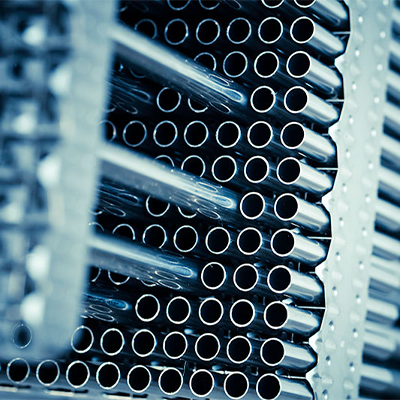
Researchers from Purdue, working with CINT Scientists Brad L. Boyce and Khalid Hattar, show that a gradient nanostructured ferritic steel exhibits simultaneous improvement in yield strength by 36% and uniform elongation by 50% compared to the homogenously structured counterpart.
Purdue University News Release — A new treatment tested on a high-quality steel alloy produces extraordinary strength and plasticity, two traits that must typically be balanced rather than combined. Ultra-fine metal grains that the treatment produced in the outermost layer of steel appear to stretch, rotate and then elongate under strain, conferring super-plasticity in a way that Purdue University researchers cannot fully explain. Full story here.

CINT Scientist Igal Brener and Sandia team demonstrate ultrafast beam-steering breakthrough at Sandia Labs and CINT.
Sandia News Release — In a major breakthrough in the fields of nanophotonics and ultrafast optics, a Sandia National Laboratories research team has demonstrated the ability to dynamically steer light pulses from conventional, so-called incoherent light sources. Full story here.
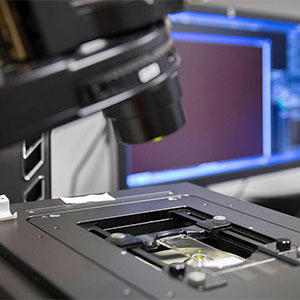
CINT Scientist John Watt uses electron microscopy to detect tiny deposits of gadolinium in the kidneys.
Physicians routinely prescribe an infusion containing gadolinium to enhance MRI scans, but there is evidence nanoparticles of the toxic rare earth metal can infiltrate kidney cells, sometimes triggering severe side effects, University of New Mexico researchers have found. CINT highlight slide here.

Sandia News Release — Can clay capture carbon dioxide?
“We would like low-cost energy, without ruining the environment,” said CINT Scientist Susan Rempe, a Sandia bioengineer and senior scientist on the project. “We can live in a way that doesn’t produce as much carbon dioxide, but we can’t control what our neighbors do. Direct-air carbon capture is important for reducing the amount of carbon dioxide in the air and mitigating the carbon dioxide our neighbors release.
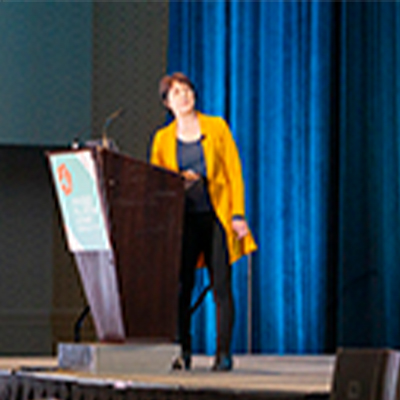
Symposium X—MRS/The Kavli Foundation Frontiers of Materials talk featured in MRS 360.
From Flask to Devices—The Making of Exceptionally Functional Colloidal Quantum Dot Emitters.
In her Symposium X talk, Jennifer Hollingsworth discussed designing and making nanocrystal quantum dots that could potentially address the demanding requirements of quantum information technology.
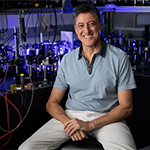
Sandia News Release — Through the quantum looking glass.
A thin device triggers one of quantum mechanics’ strangest and most useful phenomena.
CINT scientists and scientists at the Max Planck Institute for the Science of Light have reported on a device that could replace a roomful of equipment to link photons in a bizarre quantum effect called entanglement. This device — a kind of nano-engineered material called a metasurface — paves the way for entangling photons in complex ways that have not been possible with compact technologies. Full story here.
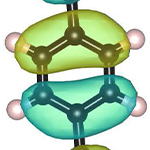
Semi-empirical electronic Hamiltonians have nearly 30 years of successful history modeling chemistry processes such as photon absorption and chemical reactivity. However, they have always suffered from limited accuracy and generalizability due to the use of static parameters fit to limited datasets. New research from Los Alamos National Laboratory published in the Proceedings of the National Academy of Sciences uses a machine learning model to dynamically reparametrize semi-empirical Hamiltonians. Allowing physically interpretable model parameters to be adjusted according to the local chemical environment both significantly increases the model accuracy and enables new ways of interpreting results produced by machine learning models. Full story here

CINT graduate student and user Zachary Milne awarded "Most Technologically Innovative Poster" by Chan Zuckerberg Initiative.
Poster Abstract: Transmission electron microscopes (TEMs) are an essential tool used extensively across industry and research for material science, nanoscience, and biological innovation. However, after many years of consolidation, the commercial landscape of TEMs risks becoming an oligopoly dominated by a handful of large players; which may limit the development of new optical geometries. Much of the hesitancy for academics to propose substantial hardware modifications arises from the large purchase price, fear of voiding the warranty/service contract and the fact that many instruments sit in shared usage facilities where downtime would be unacceptable. By contrast, multiphysics simulation packages allow researchers to evaluate potential lens designs rapidly and inexpensively, without the need to disassemble the TEM column and realign it afterwards. By simulating both the magnetic field generated by the lens and the electron path through this field, changes to the materials or geometry of the lens can be analysed. This offers a wealth of different parameters to tune for the exploration of alternative designs. With this work, we aim to outline an intuitive and accessible methodology through which electron optics can be modelled utilising a ‘virtual twin’ concept. We hope this approach encourages new, creative, and sustainable grass roots innovation to advance TEM capabilities through microscope modification. Poster
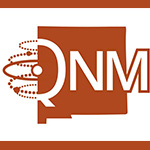
Sandia News Release — Quantum New Mexico Coalition aims to establish state as national hub.
Science, education and economic development leaders across New Mexico have formed a coalition to bring future quantum computing jobs to the state. Sandia, University of New Mexico, and Los Alamos National Laboratory announced the new coalition at UNM during the Quantum New Mexico Symposium.

CINT User Annie Xian Zhang Receives $500,000 NSF Career Award.
Thanks to a $500,000 Faculty Early Career Development (CAREER) award from the National Science Foundation, which supports early-career faculty who are academic role models, Zhang will investigate how “twisting” two sheets of graphene can alter the thermal properties of two-dimensional (2D) materials and push the limits of thermal modulation.

CINT Scientist selected 2022 TMS Brimacombe Medalist
Congratulations to Khalid Hattar, 2022 Brimacombe Medalist.
This mid-career award recognizes individuals with sustained excellence and achievement in business, technology, education, public policy, or science related to materials science and engineering and with a record of continuing service to the profession.
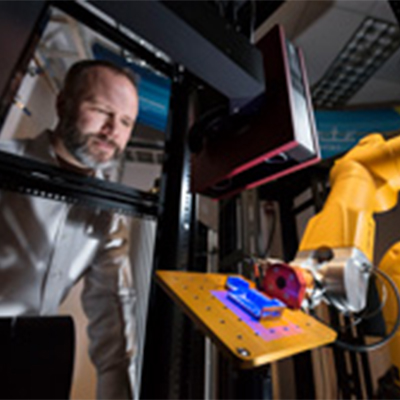
Sandia News Release — CINT Scientist to lead materials science organization
Brad Boyce, a materials scientist at Sandia National Laboratories, was elected president of The Minerals, Metals and Materials Society. Boyce will become vice president of the society on March 3 at its annual meeting, and then serve three consecutive one-year terms as vice president, president and past president. He is the second Sandia employee to be elected to lead the professional society.